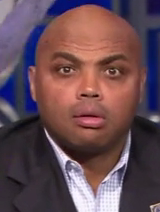89. How are draft picks handled in trades? What is the Ted Stepien rule?
Draft picks (both first and second round) count $0 for salary matching purposes. This is true both before and after the draft, until the player signs a contract. This can make it very difficult to construct a trade that is equitable in both trade value and basketball value. For example, Vancouver selected Steve Francis with the #2 pick in the 1999 draft, and subsequently traded his draft rights to Houston. When the trade was finally engineered, it included three teams (Orlando was also involved), 11 players (including Francis) and two future draft picks.
Once the draft pick signs a contract, his actual salary becomes his trade value.
Note that even though a draft pick's trade value (for salary matching purposes) is $0, a first round pick is included in team salary at 120% of his scale amount once he is selected in the draft, until he signs a contract with the team holding his draft rights or with a non-NBA team (see question number 47) or agrees in writing not to sign an NBA contract that season (see question number 13). If an unsigned first round draft pick is traded, then 120% of his scale amount is included in the acquiring team's team salary as soon as the trade is completed. An unsigned second round pick does not count toward team salary.
The "Seven Year Rule" allows teams to trade draft picks up to seven drafts into the future (for example, if this is the 2017-18 season, then a 2024 pick can be traded, but a 2025 pick cannot). It is common to "protect" picks depending on their position (for example, "we keep it if it falls #1 through #14, otherwise you get it"), although no more than 55 picks in a single draft can be protected (for example, a top-55 protected pick is legal, but a top-56 protected pick is not). This helps to avoid a repeat of some unfortunate past trades, such as the 1980 trade between the Cavs and Lakers where LA received what turned out to be the first overall pick in the 1982 draft, which they used to select James Worthy. It is common for these protections to relax over several years. For example, a team might convey its own pick in the first draft in which it is not a protected pick, where a protected pick is defined as picks 1-14 in 2018; 1-10 in 2019; 1-6 in 2020; and unprotected in 2021. If the team's picks in 2018, 2019 or 2020 fall within the protected range, then they keep it; otherwise it is conveyed to the other team. If they make it to 2021 without having conveyed a pick, then the other team gets their 2021 pick unconditionally.
A team may protect its pick through all seven upcoming drafts. However, if a protected pick is not conveyed by the seventh draft, the obligation to convey a pick either must extinguish after the seventh draft, or convert to a permissible alternative (such as a second round pick).
Teams are restricted from trading away future first round draft picks in consecutive years. This is known as the "Ted Stepien Rule." Stepien owned the Cavs from 1980-83, and made a series of bad trades (such as the 1980 trade mentioned above) that cost the Cavs several years' first round picks. As a result of Stepien's ineptitude, teams are now prevented from making trades which might leave them without a first round pick in consecutive future years.
The Stepien rule applies only to future first round picks. For example, if this is the 2017-18 season, then a team can trade its 2018 first round pick without regard to whether they had traded their 2017 pick, since their 2017 pick is no longer a future pick. But they can't trade away both their 2018 and 2019 picks, since both are future picks. Teams sometimes work around this rule by trading first round picks in alternate years, or by giving one team the right to swap picks with the other.
When dealing with protected picks, the Stepien rule is interpreted to mean that a team can't trade a pick if there is any chance at all that it will leave the team without a first round pick in consecutive future drafts.
If a team trades two future first round picks and the first of those picks is protected, then that pick would be conveyed in the first draft in which the protection does not apply (as described above), and the second pick would be conveyed two years after the first pick is conveyed. But since both picks must be conveyed within seven years, the protection on the first pick cannot last longer than four years (i.e., the first pick must be conveyed by the fifth year).
A team can have up to two picks with this two-year waiting period in effect at any time. In order to have two such picks with subsequent conveyance, the protection on the first trade cannot last longer than two years (i.e., the first pick must be conveyed by the third year, so the first subsequent pick is conveyed by the fifth year, and the second subsequent pick is conveyed by the seventh year).
Other rules that pertain to trading draft picks:
Teams cannot trade future picks not already in their possession. For example, a team cannot make a trade in 2017 that conveys the lesser of any 2020 first round pick in its possession on the date of the 2020 draft, and subsequently acquire a pick to send.
A team can add protection to a pick it acquires in trade, as long as they received the pick as an unconditional pick. For example, Team A can receive an unprotected first round pick from Team B, and subsequently trade the pick to Team C, protected for picks 1-14. A team cannot add protections to a pick that already had protections when it was received. For example, Team A cannot receive a pick that is protected for picks 1-5 from Team B, and then add further protections when trading it to Team C. However, Team A could receive an unconditional pick from Team B, then trade it to Team C, protected for picks 1-14, and also to Team D, protected for picks 15-30 (i.e., Team D gets the pick if it's in the lottery, and Team C gets the pick if it isn't in the lottery).
Teams cannot subsequently acquire picks to change the "first allowable draft" per the Stepien rule. For example, suppose a team trades away two picks, with the first being a conditional pick and the second in the first allowable draft after the first pick is conveyed. If the first pick is conveyed in 2018, then the first allowable draft in which the second pick can be conveyed is 2020. If the team subsequently acquires a 2019 pick from another team (so it has two picks that year), the first allowable draft for the conveyance of the second pick remains 2020.
Any or all teams in a trade may be granted the one-time option to defer the conveyance or receipt of a pick for one year (only). For example, a trade between Miami and Orlando that includes Miami's 2019 first round draft pick might provide Miami with the option to defer the pick to 2020. In addition:
A team can exercise a pick deferment only once.
The conveyance of a pick can be deferred for only one year.
A protected pick (as described above) cannot be deferred.
The deferment is subject to the Seven Year Rule. A pick in the seventh year following a trade cannot be deferred.
Except for pick protection and the one-time option to defer the conveyance of a pick as described above, trades must specify the precise year in which a pick is to be conveyed.
The year of any alternative consideration must also be specified. For Example, if a traded first round pick is protected for picks 1-14 in 2018 and converts to two second round picks if it is not conveyed, the years of those second round picks must be specified.
A traded draft pick cannot have protection based on draft position and a one-time option to defer.
Teams are required to have only a first round pick, and not necessarily their own first round pick. Teams may trade away their own future picks in consecutive years if they already own another team's unconditional first round pick in one of those years. For example, if this is the 2017-18 season and a team has already traded away its 2019 first round pick, it cannot trade its 2018 pick. However, if it acquires another team's first round pick in either 2018 or 2019, its own 2018 pick can then be traded.
A team cannot sign its draft pick and immediately trade the player in a sign-and-trade arrangement (see question number 92).
A pick cannot be traded on the day of the draft before the pick is made.
Lottery picks cannot be traded from 6:00 PM on the day before the draft lottery until the lottery is complete.
























